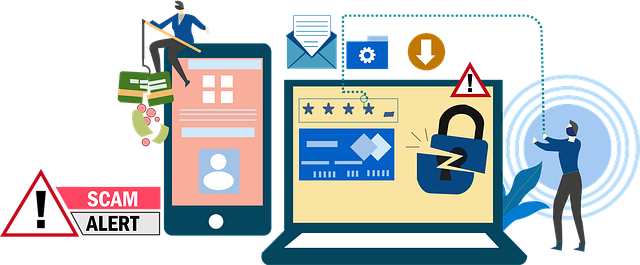Cybercrime is a common problem in our modern society. Cybercriminals are always coming up with cunning new strategies to trick their victims into falling for their traps. This is extremely dangerous for those internet users who are not aware of the dangers they face online.
You may have heard about a concept known as phishing before, but you might be asking yourself what is phishing? It’s important to know what it is and how you can avoid it, otherwise, you might become the victim of a cyber attack.
If you want to learn more about phishing and how you can spot it, keep reading to find out more. You’ll also find out how phishing has developed over the years to become more effective than ever before and why it has become a more successful cybercrime tactic.
What is Phishing
Phishing is a common form of cybercrime that is used on a daily basis in our modern world. Phishing is when cybercriminals send fraudulent emails to their victims’ email inboxes and urge them to interact with a link or attachment in the email and it is the most successful type of credential theft that cybercriminals use.
However, as soon as you interact with the email in question the hacker will have the upper hand. Interacting with an attachment in a phishing email can prompt malicious software (also known as malware for short).
Malware is extremely dangerous and it can range from viruses to spyware and even ransomware in some cases. All of these different types of malware can cause amounts of damage to your device, and some of them can cost you a lot of money too.
If you interact with a link in a phishing email there is also a chance that malware can be installed on your device. However, a link can also take you to a fake website that has been set up by the cybercriminal. The website will have a keylogger installed and this will copy everything that you type into the website and give it straight to the hacker. This allows the hacker to steal personal information and login credentials from their victims, which will put your accounts at risk and also create the possibility for the cybercriminal to commit identity theft.
How has Phishing Developed?
Phishing already sounds dangerous enough as is, but cybercriminals have made it even worse in recent times by making their phishing attempts more difficult to identify. They have been using a concept known as social engineering to trick more victims into falling into their trap.
Social engineering is when the cybercriminals pose as a company or person that you know and trust, thus meaning that you will be more likely to interact with the email that they are sending to your inbox and fall into their trap. Moreover, phishing scams continue to bypass email security filters when the hackers use legitimate email addresses, so they might not even end up in your junk folder.
As an example, hackers might send you an email pretending to be Netflix. Netflix has millions of subscribers and it is one of the leading entertainment and streaming platforms in the world. This makes it much easier to target a large number of people with a Netflix phishing scam.
The phishing email will look legitimate as the hackers will design it to replicate the Netflix emails by using the same color scheme and logo that Netflix uses. The phishing scam will inform the user that they must update their billing information or risk having their account suspended. The email will also contain a link, however, clicking on this link will take you to a fake website that has a keylogger installed on it. As soon as you type your login credentials into the fake website the hackers will be able to steal your passwords and log into your account.
Phishing doesn’t have to come in the form of an email either. With the rise of social media and the popularity of apps such as Twitter and Instagram phishing has now become a common sight on these platforms as well. There are many fake accounts that will send messages with fake links and attachments urging you to interact with them. It’s arguably easier for hackers to use these platforms as well, as they are able to see which accounts you follow and what interests you have. This allows them to tailor their phishing scam to what you are interested in, making it more likely for their phishing scams to be successful.
Modern phishing scams are all over the internet and you can even come across them while browsing the web. Fraudulent links can be hidden on websites as icons and images, which means that you could accidentally click on one of these links which would install malware on your device.
How to Spot Phishing
As we have seen, phishing is extremely dangerous and cybercriminals are getting better and better at disguising their phishing attempts and increasing their chances of a successful cyber attack. It’s important to understand how you can avoid becoming a victim of one of these phishing scams.
When it comes to your email inbox you need to be wary of any emails in your junk folder and avoid interacting with them unless you know the sender. It’s always a good idea to double-check the email address that sent the email to you, as you will often be able to see if a fake email is used to impersonate a popular company. You should also be on the lookout for any spelling or grammatical errors, which is a telltale sign that the email was written in a rush. Large companies will always check their emails multiple times before sending them, which means they won’t have any spelling or grammatical mistakes in them. Another bonus tip: Try using a phishing simulator. The phishing simulation will make you better at catching these emails and avoiding potential damage.
You should also avoid clicking on links that have been sent to you on social media platforms, even if they come from someone you know. Sometimes your friends and family can have their accounts hacked and the cybercriminals can use their accounts to send you fraudulent links.
You should also consider investing in premium antivirus software. Antivirus software will constantly scan your devices for any viruses and remove them if any have been discovered. However, some antivirus software can also be used to check links and websites for any suspicious content that you may need to be aware of, and this is always good to have as a safety net to avoid falling for a phishing scam.
 free html design Free html design templates
free html design Free html design templates






